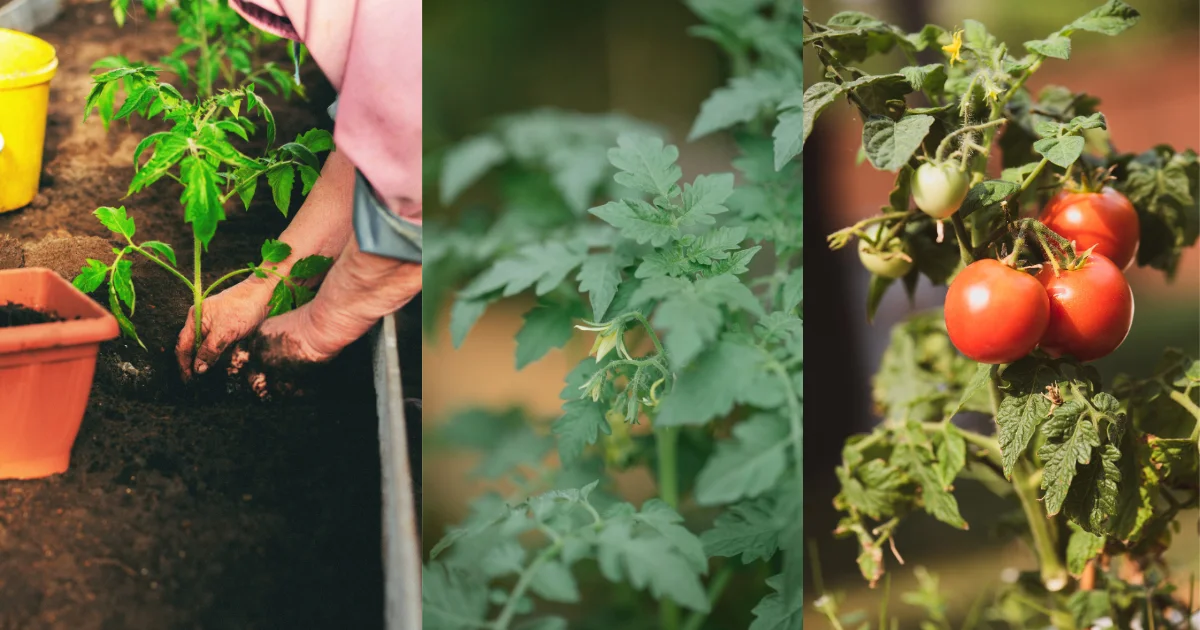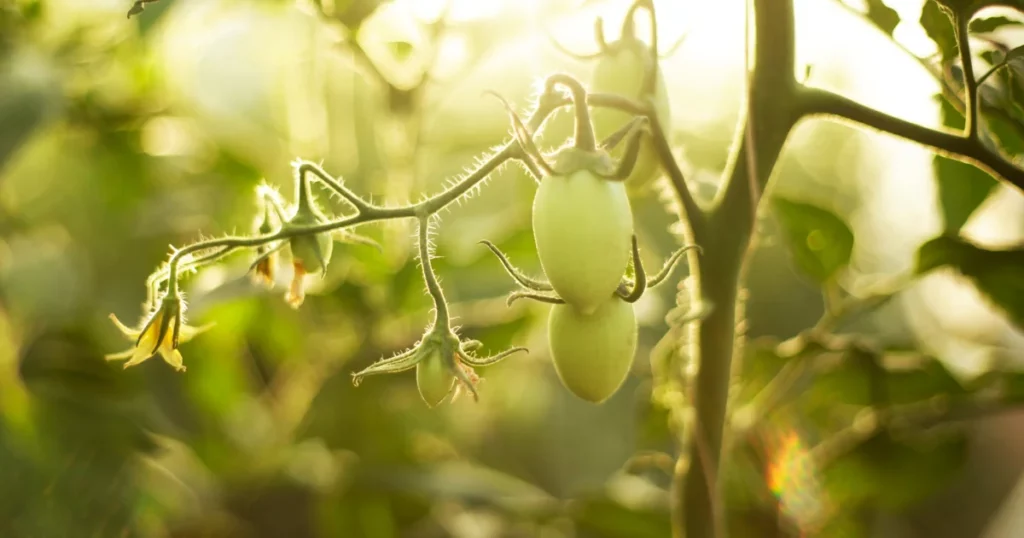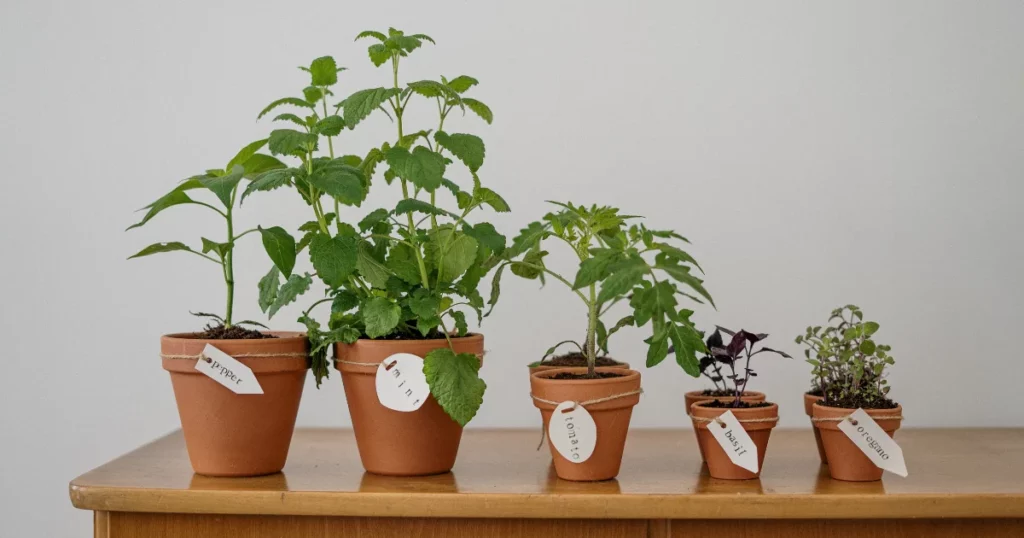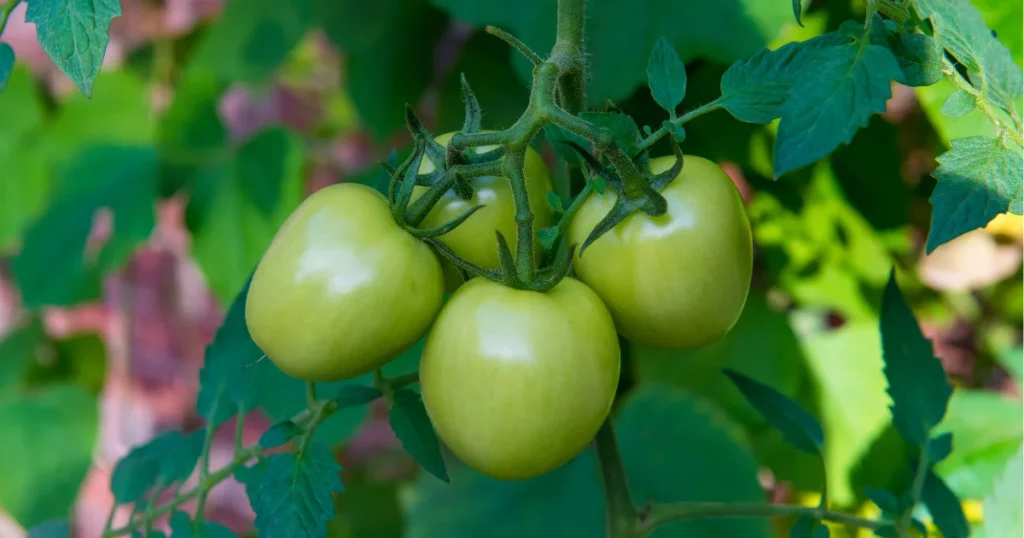Why Are Tomatoes Flowering But Not Fruiting? Causes and Solutions

Tomatoes are a staple in many American gardens, prized for their juicy, flavorful fruits. However, a common concern among beginner gardeners is when “tomatoes are flowering but there is no fruit.” This issue can be frustrating, especially when you’ve invested time and effort into nurturing your plants. In this post, we’ll delve into the reasons behind “tomato plants flowering but not fruiting” and provide actionable solutions to address this challenge.
But before that, you should know that a tomato plant typically takes 50 to 80 days from transplanting to produce mature fruit, depending on the variety. If grown from seed, add an additional 5-7 weeks for germination and seedling growth.
Experiencing blossom drop on your tomatoes? Discover the causes and solutions below:
1. Inadequate pollination
The most common reason tomatoes don’t set fruit is due to inadequate pollination. Tomatoes are self-pollinating, meaning they don’t require another plant to produce fruit. However, they do rely on external factors, like wind or insects, to move pollen from the male part of the flower to the female part.

Solution: To encourage pollination, gently shake your tomato plants during the morning hours. This mimics the action of wind or insects. If you’re growing tomatoes indoors or in a greenhouse, consider using a small paintbrush to manually transfer pollen.
How to tell if tomato flower is pollinated? Well, you need to observe the base of the flower after a few days; if pollinated, the flower will begin to wilt and a small fruit will start to develop at the base, indicating successful pollination. If the flower falls off with no fruit development, pollination likely did not occur.
2. Extreme temperatures
Tomatoes are sensitive to temperature. If nighttime temperatures drop below 55°F or rise above 75°F, or if daytime temperatures exceed 85°F to 90°F, it can interfere with the fruit-setting process.
Solution: Monitor the temperatures in your garden. If they’re consistently too high or too low, consider providing shade during the hottest parts of the day or using row covers to trap warmth during cooler nights.
3. Excessive nitrogen in the soil
While nitrogen is essential for tomato plant growth, an overabundance can lead to lush, green plants with plenty of leaves but few fruits. This is because the plant focuses its energy on vegetative growth at the expense of fruit production.
💡Frontiers research suggests optimal nitrogen rates for tomato growth under various stresses: 230.23 kg hm^2 (CK), 230.02 kg hm^2 (SHT), and 115.32 kg hm^2 (HT) for best yield and quality.
Solution: Ensure a balanced fertilizer. If you suspect your soil has too much nitrogen, opt for a fertilizer with a higher phosphorus content to promote flowering and fruiting.
4. Insufficient light
Scientifically, tomatoes require a minimum of six to eight hours of direct sunlight daily for optimal fruit production. Coupled with this, maintaining a suitable temperature between 70°F to 85°F during the day and 60°F to 70°F at night is essential. Without these conditions, your tomato plants might bloom with flowers but disappointingly might not bear fruit.

Solution: If your plants aren’t receiving enough sunlight, consider relocating them to a sunnier spot. For those growing tomatoes indoors, supplemental lighting might be necessary.
5. Stress factors
Various stress factors, such as irregular watering, pest infestations, or diseases, can hinder fruit production of tomato plants. Stress can divert the plant’s energy away from fruiting.
Solution: Maintain a consistent watering schedule, ensuring the soil remains moist but not waterlogged. Regularly examining your plants is crucial. Consistently check leaves, stems, and soil for pests or diseases. Early detection allows prompt action, preventing further damage. Utilize resources and seek advice when needed.
6. Over-pruning
Pruning is an essential practice to encourage healthy growth, allowing for better air circulation and sunlight penetration, which are crucial for the well-being of tomato plants. However, over-pruning can be detrimental, causing undue stress to the plants and significantly reducing their fruiting potential. It can lead to a weakened structure and expose the plant to diseases and pests, impacting overall yield.
Solution: Prune your tomato plants judiciously, focusing on removing only the necessary leaves and branches. Be mindful not to strip the plant too bare, leaving enough foliage to enable photosynthesis and protect the fruit from sunscald.
7. Variety-specific traits
For novice gardeners, it’s essential to recognize that not all tomato varieties are created equal. Some types of tomatoes are naturally predisposed to yield fewer fruits, while others might have extended intervals between the appearance of flowers and the emergence of fruit.

Solution: Before planting, invest time in researching the specific traits of your chosen tomato variety. Understand its growth patterns and fruiting tendencies. If you’re aiming for a garden bursting with tomatoes, it might be worth considering a switch to a variety known for its abundant fruiting.
Conclusion
While it can be disheartening to see your tomato plants flowering but not fruiting, understanding the underlying causes can empower you to take corrective action. By addressing issues related to pollination, temperature, nutrition, light, stress, pruning, and variety selection, you can increase the likelihood of a bountiful tomato harvest.
Remember, gardening is as much about learning and adapting as it is about planting and harvesting. With patience and persistence, you can overcome the challenges that come your way and enjoy the fruits of your labor—literally!
